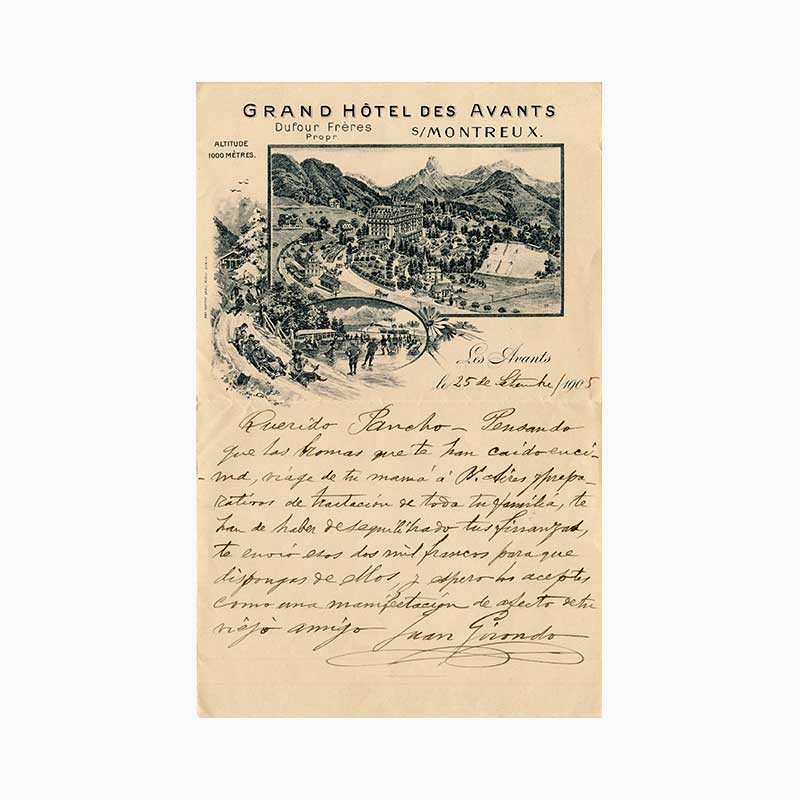
Letter from Juan Girondo, Montreux, 25 September 1905
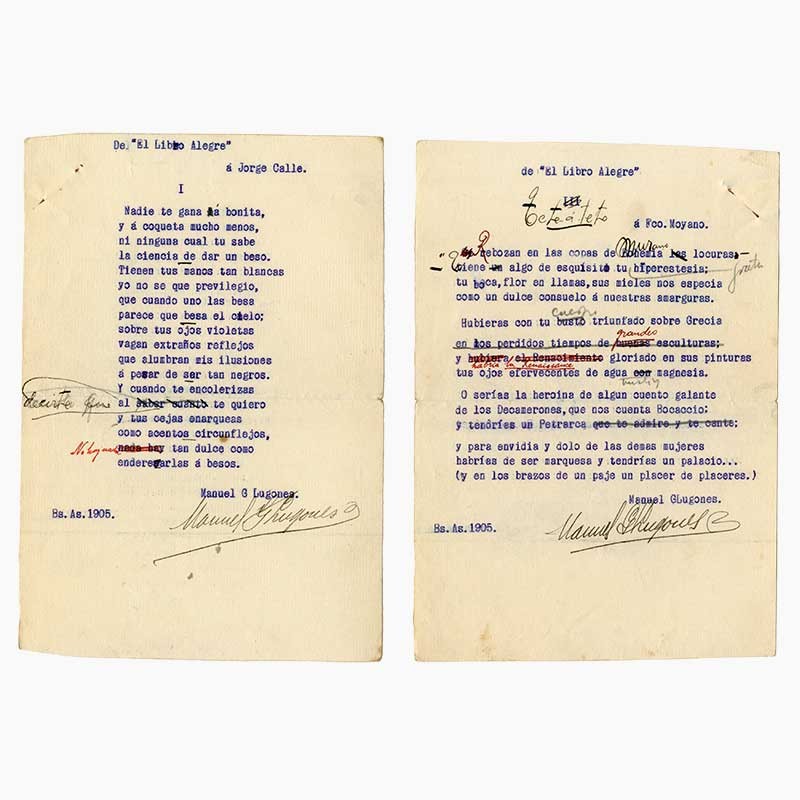
Manuel Lugones
Manuscript of El libro alegre, 1905
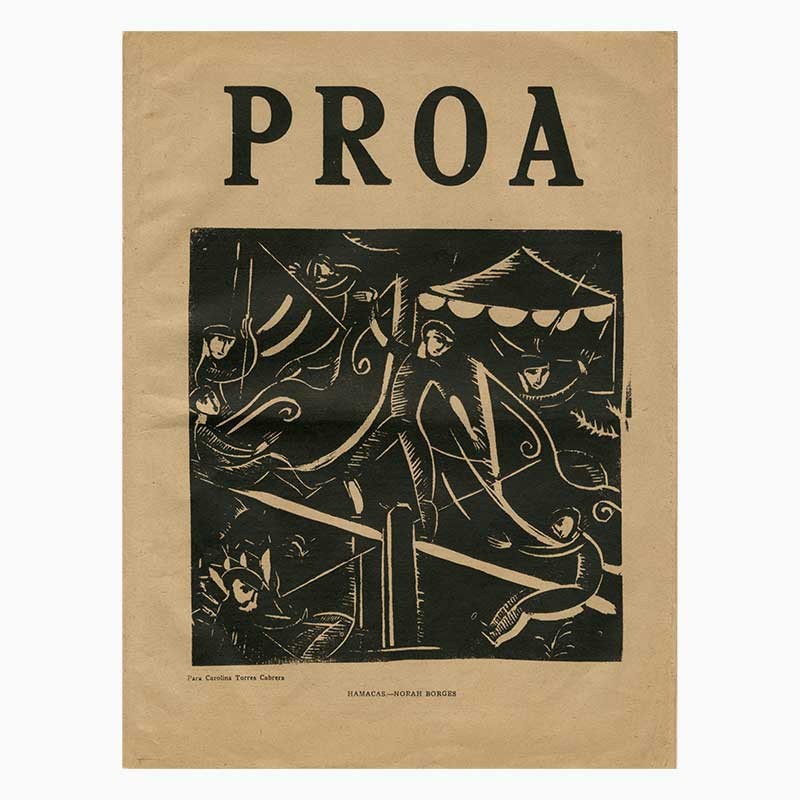
Proa, 1st year, n. 1, Buenos Aires: s.n., August 1922
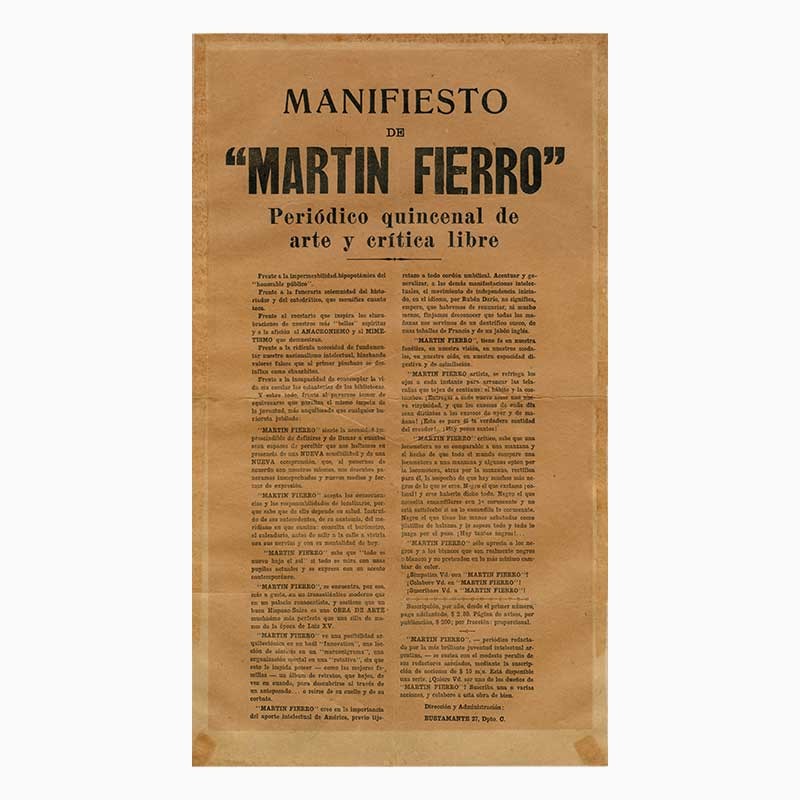
Oliverio Girondo
Martín Fierro’s manifest, Buenos Aires: Martín Fierro, 1924
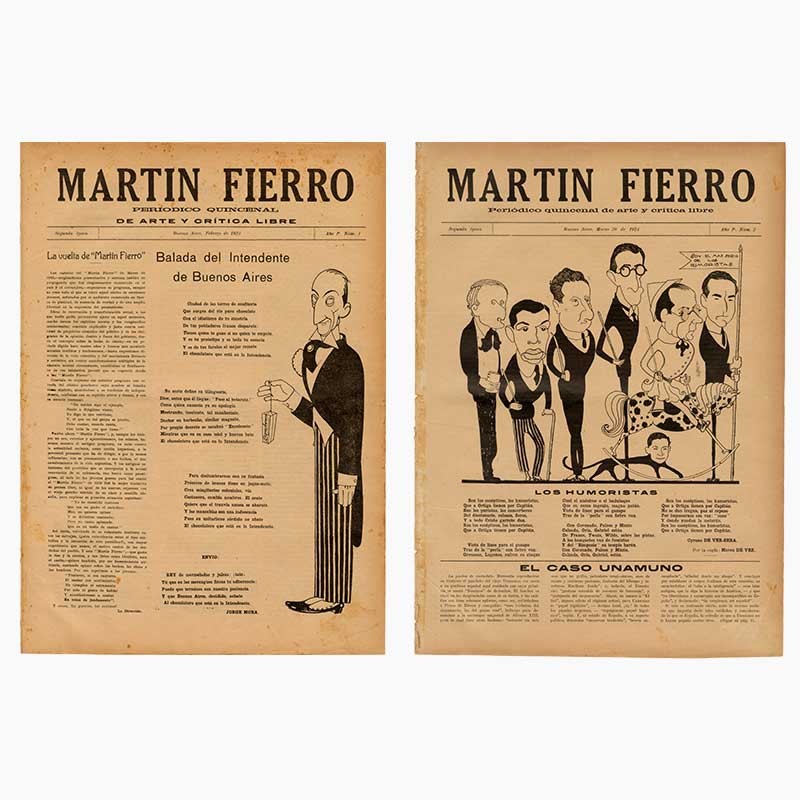
Evar Méndez, Oliverio Girondo, Sergio Piñero, Alberto Prebisch, Eduardo J. Bullrich
Martín Fierro. Periódico quincenal de arte y crítica libre, numbers 1 to 45 [complete set], Buenos Aires: Martín Fierro, February 1924 - November 1927 [selection]
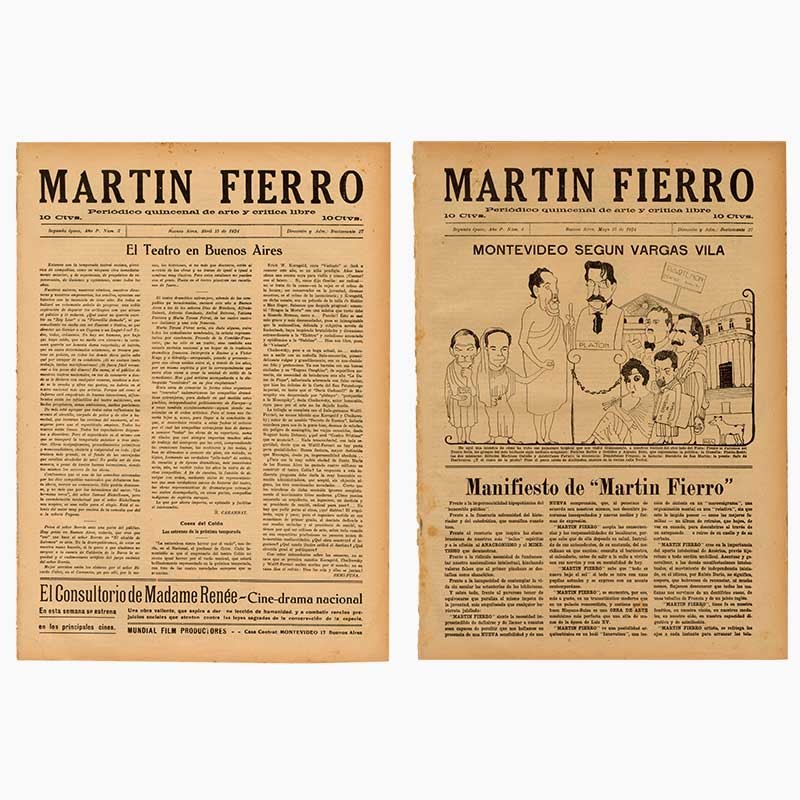
Evar Méndez, Oliverio Girondo, Sergio Piñero, Alberto Prebisch, Eduardo J. Bullrich
Martín Fierro. Periódico quincenal de arte y crítica libre, numbers 1 to 45 [complete set], Buenos Aires: Martín Fierro, February 1924 - November 1927 [selection]
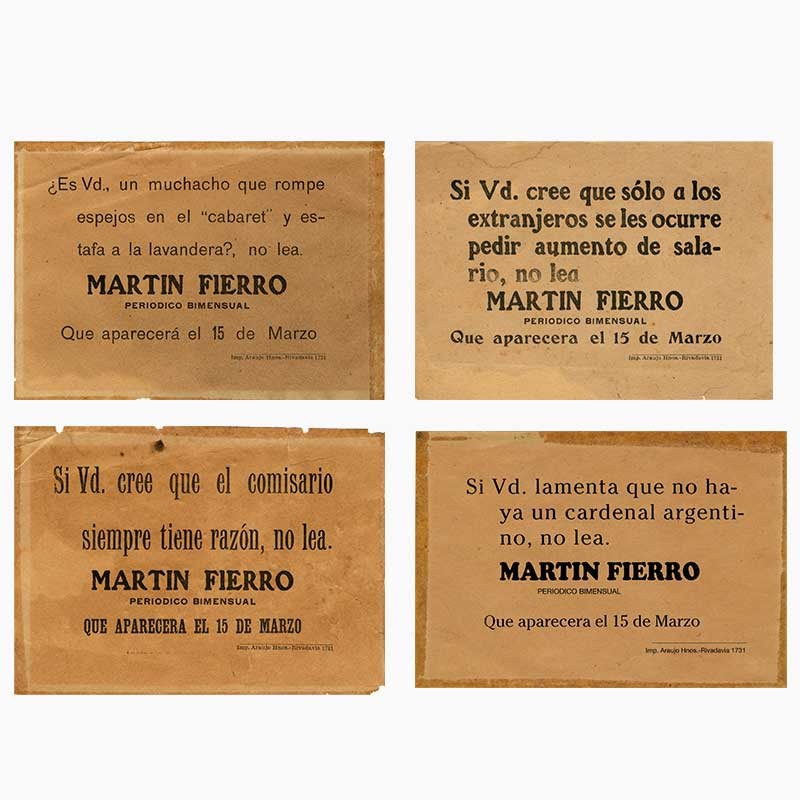
Flyers announcing the realease of Martín Fierro, n.d. [1924?]
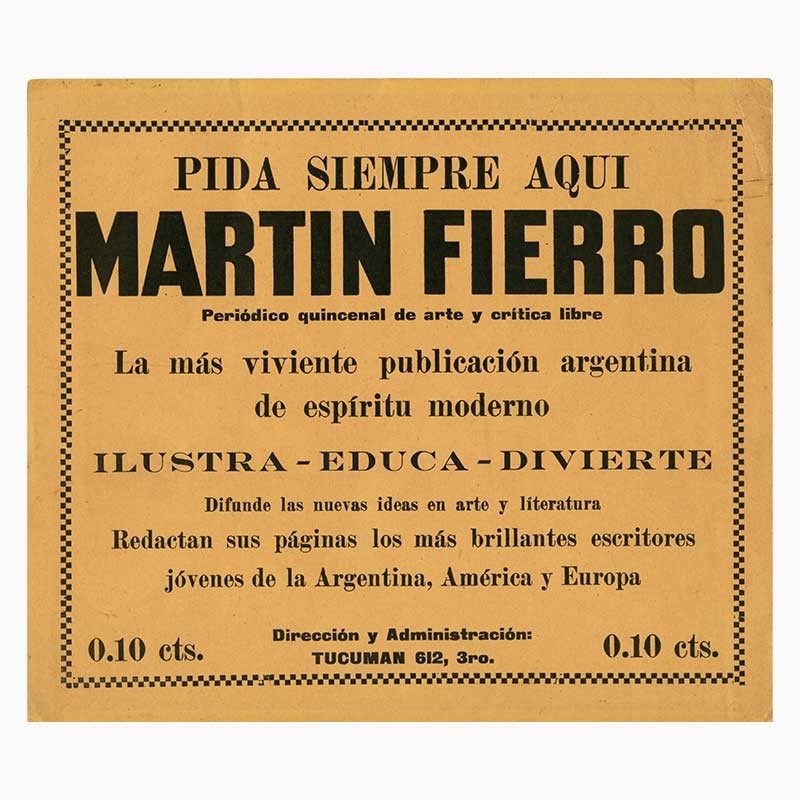
Advertisement of the newspaper, n.d. [1924?]
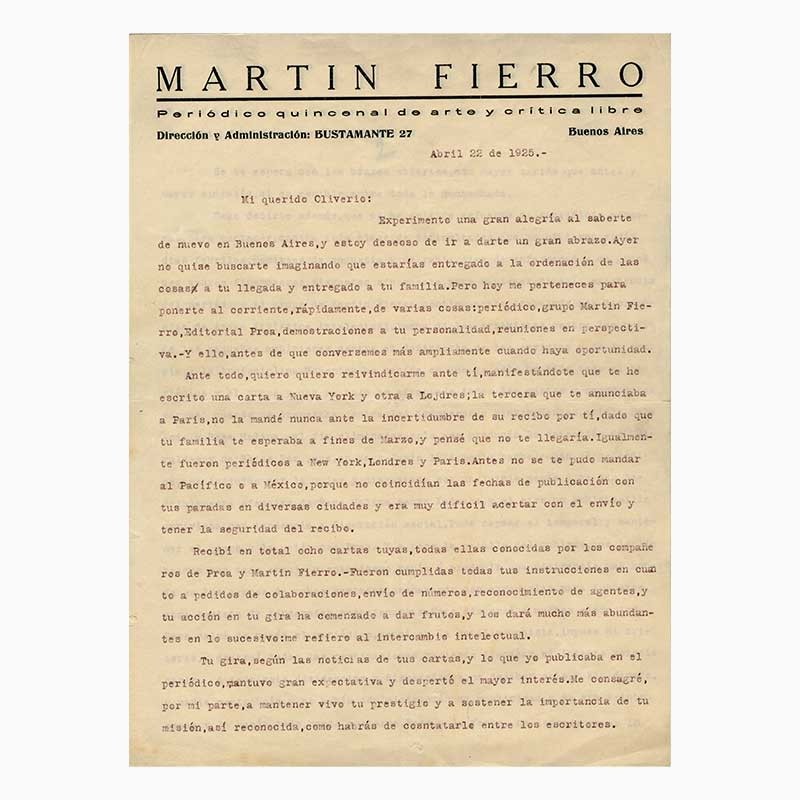
Letter from Evar Méndez to Oliverio Girondo, Buenos Aires, 22 April 1925
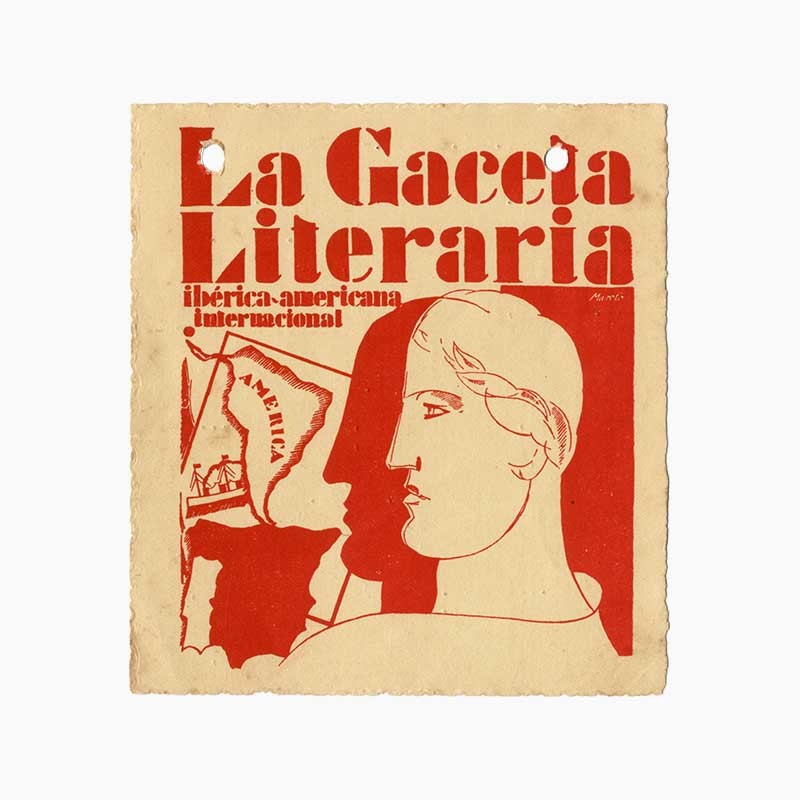
Letter from Guillermo de Torre to Lysandro Z. D. Galtier, Madrid, 19 June 1927
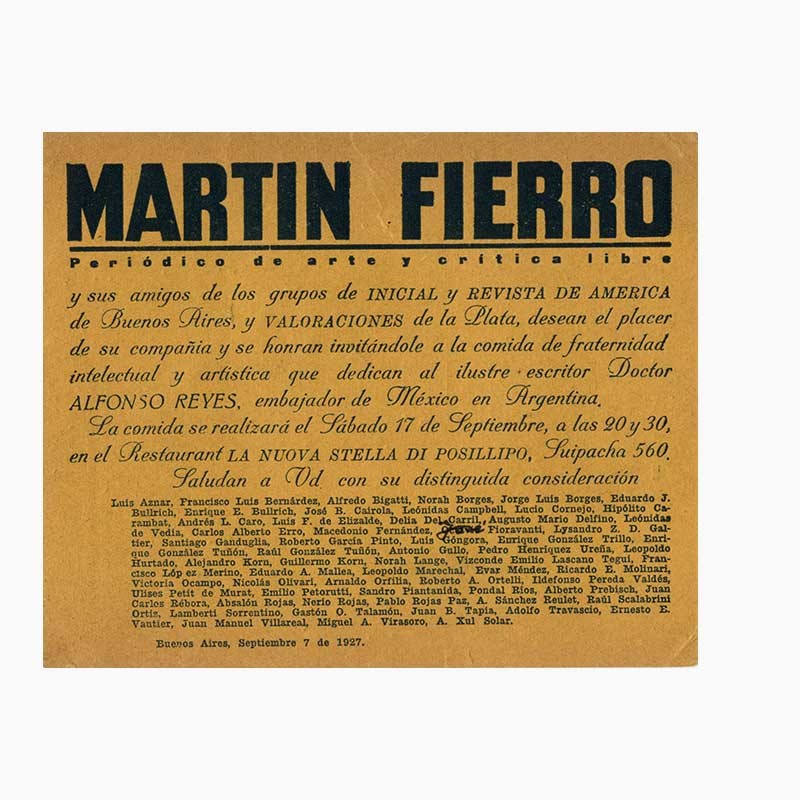
Invitation to a lunch dedicated to Alfonso Reyes, Buenos Aires: Martín Fierro, 7 September 1927
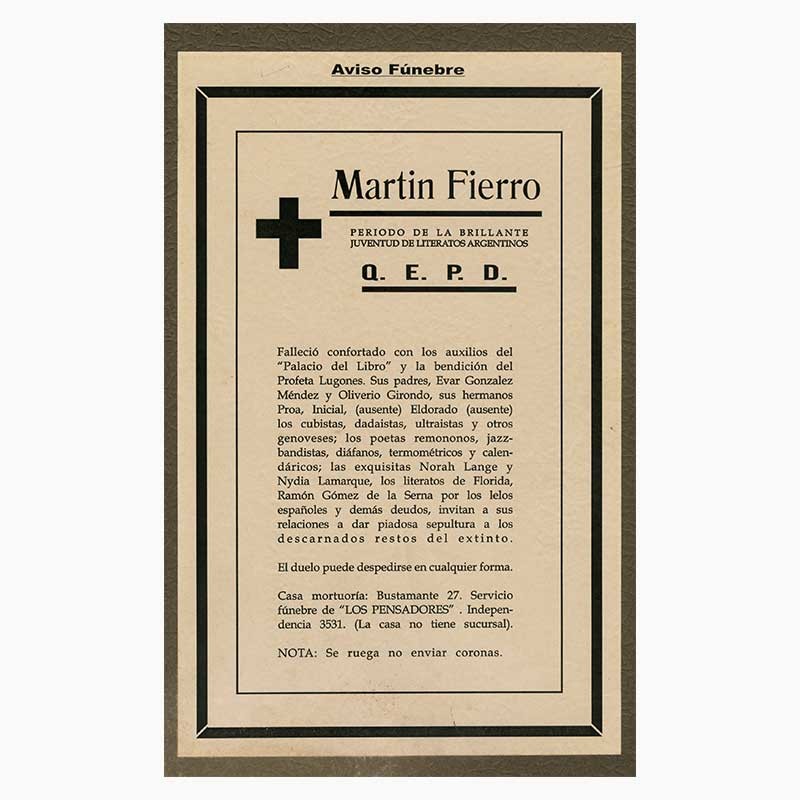
Obituary of the newspaper Martín Fierro, Buenos Aires, n.d. [1927?]
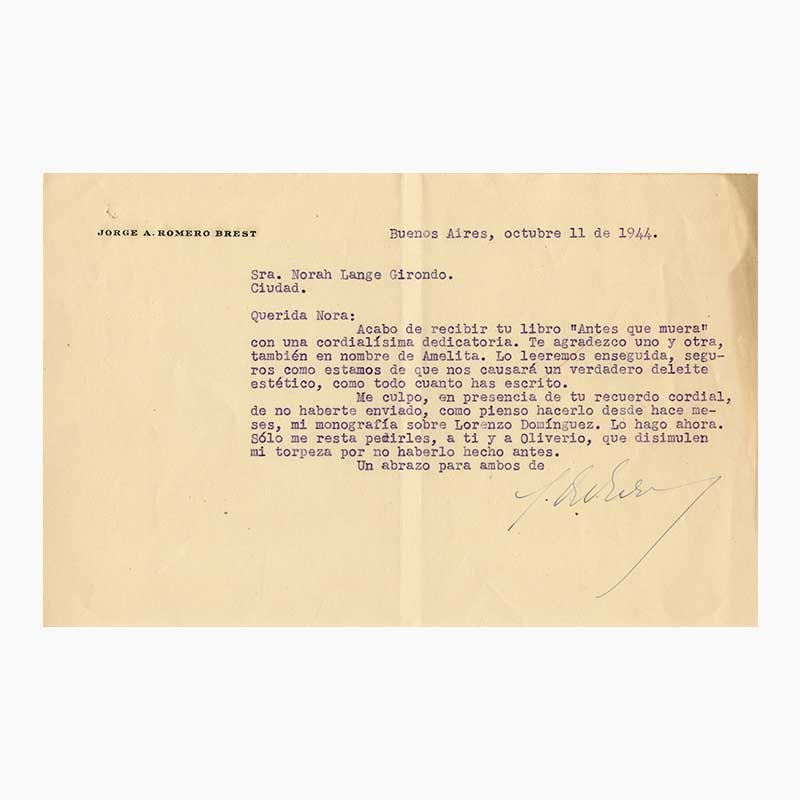
Letter from Jorge Romero Brest to Norah Lange, Buenos Aires, 11 October 1944
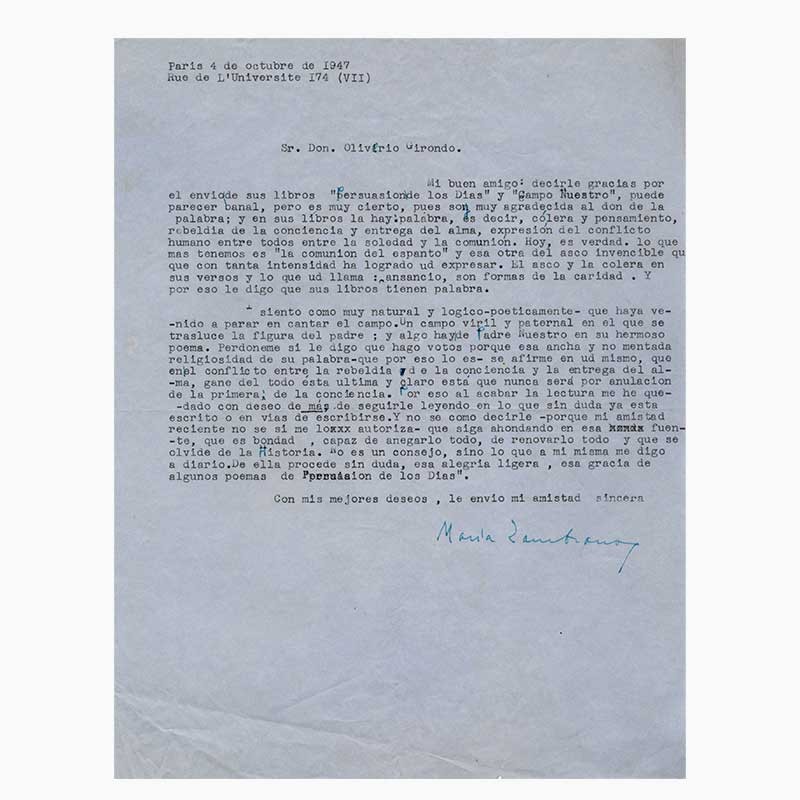
Letter from María Zambrano to Oliverio Girondo, Paris, 4 October 1947
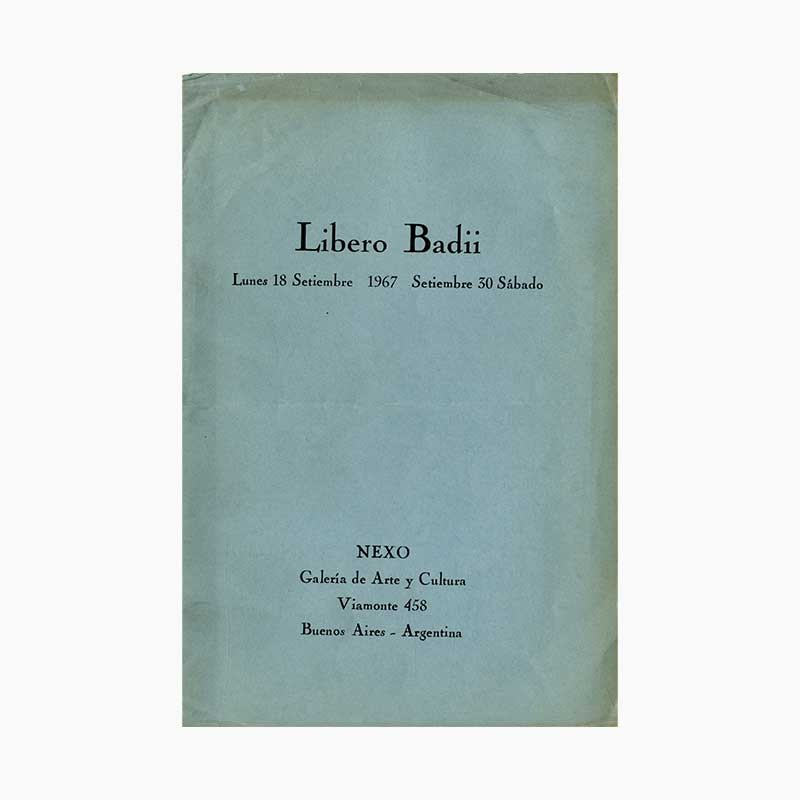
Libero Badii, Buenos Aires: Galería de Arte y Cultura, 1967
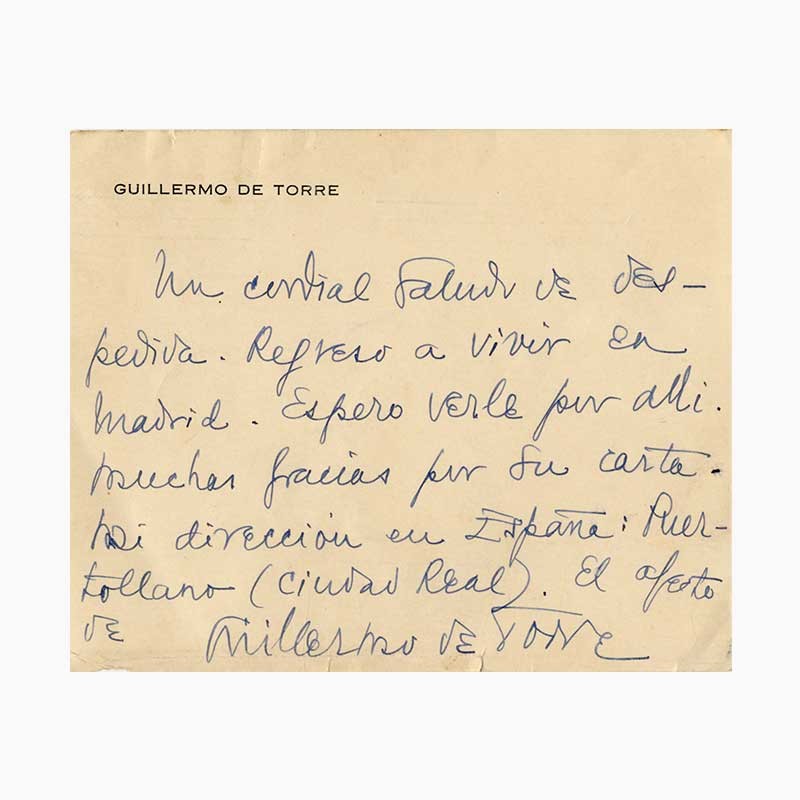
Farewell card from Guillermo de Torre as he was moving to Madrid, s.l., n.d.
330 publications and documents.
The Buenos Aires-based publication Martín Fierro, «a biweekly newspaper of art and free speech», appeared in 1919, when a group of young avant-garde writers decided to launch a satirical publication with literary concerns that would contribute to the creation of a «cultural scene» which, according to them, Argentina lacked at that time.
Martín Fierro was promoted by Evar Méndez (director), the poets Oliverio Girondo, Luis Franco and Cayetano Córdoba Iturburu, the novelists Pablo Rojas Paz and Ernesto Palacio and the novelist and humorist Conrado Nalé Roxlo, who together constituted the «grupo de Florida». Although its subject was literature, the newspaper showed a growing interest in other artistic modalities, particularly painting. As for its scope, it was conceived as a tribune for young Argentine writers and thinkers, but it would also publish Latin American and Spanish authors, as well as translations of European authors such as Jean Cocteau and Paul Eluard.
Martín Fierro disappeared in 1927, when its promoters decided to devote themselves to other endeavors. But its mark on Argentine cultural life was already indelible; as Osvaldo Gallone has pointed out, the newspaper had managed to open «a rift in the framework of Argentine literature in two concurrent yet distinctive manners simultaneously: as a mirror of its time and as a projection of the future».
In addition to the complete collection of Martín Fierro and brochures, subscription-based bulletins and other printed documents related to its operations, Archivo Lafuente boasts originals of literary pieces, photographs, press clippings and abundant correspondence, including the letters of Oliverio Girondo, Evar Méndez and the poet Norah Lange. This collection also includes other Buenos Aires-based literary magazines of the period, such as Proa (1922-1923 and 1924-1925), Extrema izquierda (1924), La Campana de palo (1925-1926), Argentina (1931), Contra (1933), as well as documentation on the group La Brasa.